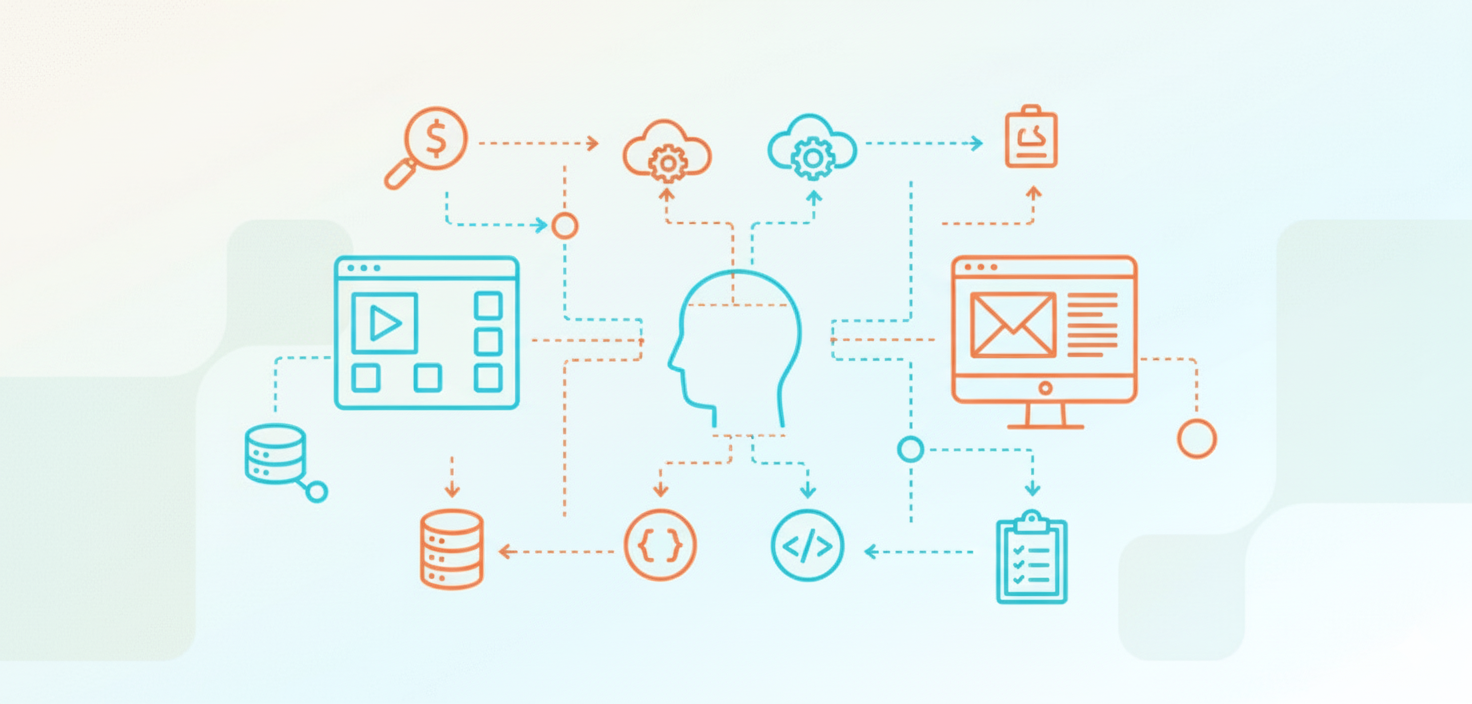トレンドとイノベーション
What are SaaS Headless Tools?

What are SaaS Headless Tools?
Saas headless tools are cloud-based software services that provide the backend functionality through APIs, disconnected from the frontend presentation.
The disassociation may permit service usage and integration with other frontends.
These tools are commonly used in headless commerce, content management systems, and other applications that need to be separated into two parts: the user interface and the logic.
With this flexibility, however, comes a trade-off. It may cost more time and money to develop such systems than traditional monolithic approaches.
What does "headless" mean for SaaS?
In the SaaS context, ‘headless’ refers to the separation of backend operations and the front-end user interface.
The architecture, with backend functions separated into API-accessible units, enables diverse front ends to utilize common services.
This architecture gives:
- more flexibility
- AI-integration capability
- multi-channel content delivery
Headless CMSs are software as a service, which means that there is a backend application that is hosted on the web, and the content is provided through an API.
What are the key features of SaaS Headless?
SaaS headless tools allow for:
- real-time editing
- flexible content structures
Key advantages include:
- better performance
- interoperability between services
- independent scaling
- enhanced security.
Headless SaaS vs. traditional SaaS: What's the difference?
Here is the side-by-side comparison between Headless SaaS and traditional SaaS:
|
Headless SaaS |
Traditional SaaS / Traditional Commerce Platforms |
|
Headless SaaS divides frontend from backend, giving more development flexibility. |
Traditional SaaS works wth a built-in frontend, which can impose limitations in product customization and integration. |
|
Headless SaaS gives developers the possibility to work with various frameworks and support multi-channel content delivery. |
Traditional SaaS solutions integrate front and back-end frameworks, creating a more fixed collaboration between systems. |
What are the challenges of using SaaS Headless?
Using SaaS headless architectures presents several challenges despite its benefits. It is important to understand these challenges and take them into account when implementing and managing this kind of architecture.
- More complex setup: Decoupling systems may correlate with a need for enhanced technical expertise.
- Development: The need to build and maintain a custom frontend can correlate with a greater development commitment.
- Increased maintenance demands: API updates, スケーラビリティ and compatibility considerations, and performance management, become the responsibility of your team.
- Integration considerations: Several services are required to function in a coordinated manner..
- Time: The use of custom builds can impact the time required for the initial release.
What are some use cases for SaaS Headless Tools?
Saas headless tools are useful and suitable for use in any situation where there is content. Such industries include:
- E-commerce platforms
- multi-lingual websites
- marketing
- mobile apps
- online learning platforms
Consider SaaS headless tools if you need to manage content from a single source and deliver it across diverse channels with real-time updates and smooth user experiences.
結論
SaaS headless tools allow for a flexible approach to software development by separating the front end from the back end. Supporting multiple channels, scalability, extensibility, and cost-effectiveness are potential aspects to consider. However, they are balanced by some complications in the setup, development and maintenance processes, as opposed to traditional SaaS.
Thus, it is worth considering these factors when preparing to utilize this kind of architecture for the purpose of enhancing a company’s capability to create customized products available across different platforms, but also to understand the tradeoffs.